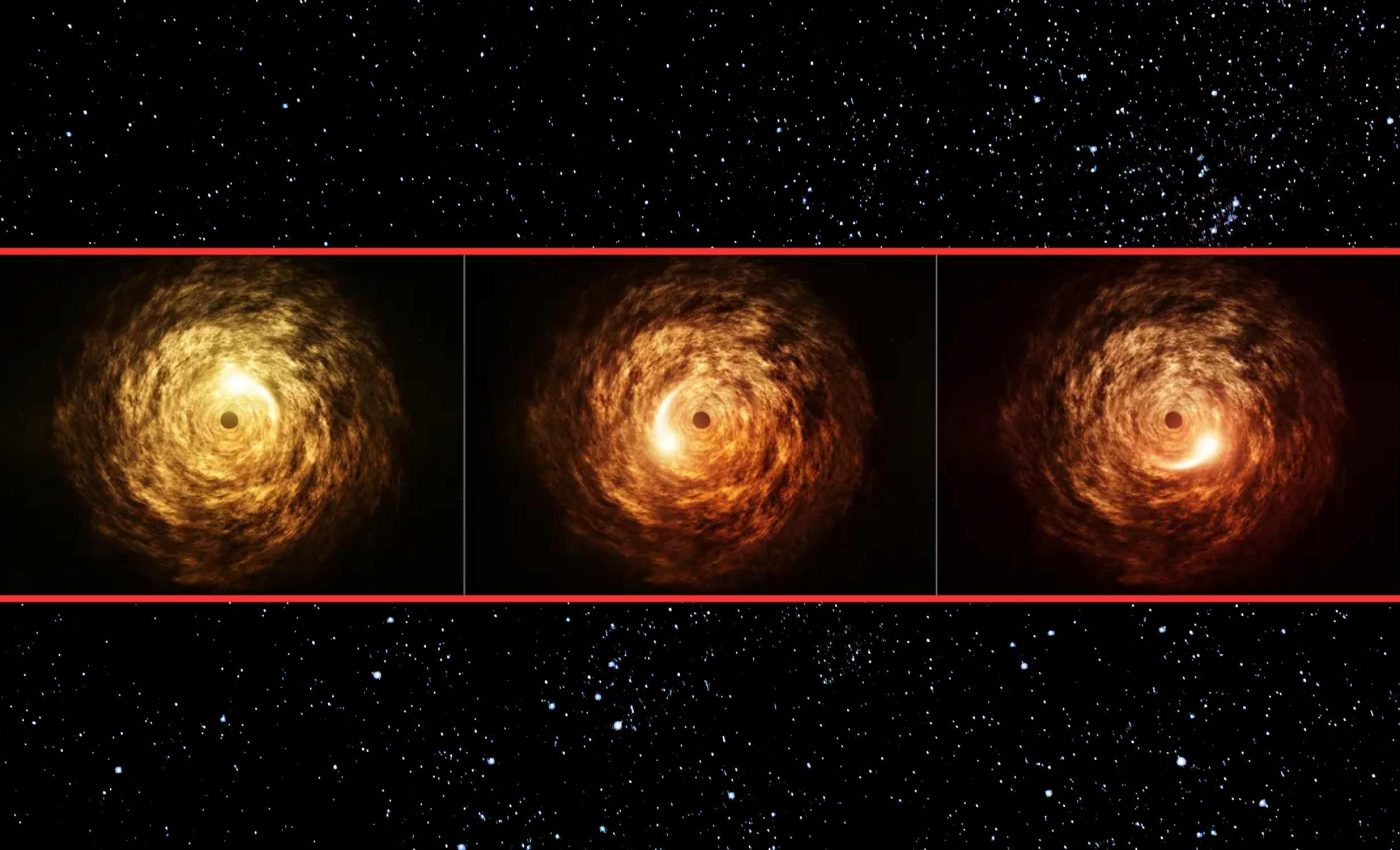
World's most powerful telescope captures a ghostly flare in the galactic heart
Astronomers used the James Webb Space Telescope (JWST) to spot a mid-infrared flare from Sagittarius A*, the Milky Way’s central black hole. The flash lasted about 40 minutes and revealed fresh clues about how these outbursts start.
The signal came from near the black hole’s disk of hot gas, where magnetic fields twist and particles race close to the speed of light. It is the first time this part of the spectrum has been seen during a flare from our galaxy’s center.
Seeing flares with MIRI
Infrared light is split into near, mid, and far bands, and mid-infrared cuts through obscuring dust. Webb’s MIRI instrument observes from 5 to 28 microns, a range that tracks how flare brightness shifts with color.
The work was led by Sebastiano von Fellenberg, a postdoctoral researcher at the Max Planck Institute (MPIFR) for Radio Astronomy. His research focuses on time-variable emission around supermassive black holes.
Sagittarius A* sits inside a crowded region that is fed by an accretion disk, a whirl of superheated gas spiraling toward the black hole. In 2022, astronomers released the first image of this object using Earth-sized radio arrays.
How MIRI saw these flares
The team observed a sharp brightening on April 6, 2024, in data taken with MIRI. In the open paper, the authors report that the mid-infrared light rose and faded within a single class period.
Their measurements included a light curve, which is a graph that shows brightness versus time. The curve’s shape helps track how quickly the emitting particles lost energy.
A separate radio facility backed up the sighting. The Submillimeter Array, an eight-dish radio observatory, caught a matching signal that trailed the mid-infrared burst by roughly 10 minutes.
As the flare faded, the spectral index – a number that tracks how brightness changes with wavelength – became steeper. Modeling suggested magnetic fields of about 40 to 70 Gauss in the emitting zone.
How scientists think flares ignite
Many models suggest this occurs due to magnetic reconnection – when field lines snap and rejoin while dumping energy.
“Our research indicates that there may be a connection between the observed variability at millimeter wavelengths and the observed mid-IR flare emission,” said Fellenberg.
This link suggests that the same population of fast-moving electrons may be responsible for both signals, cooling and shifting their radiation as they lose energy.
This strengthens the case that magnetic reconnection, rather than random turbulence, drives these bursts near the black hole’s edge.
The data support synchrotron emission, which is radiation from fast electrons spiraling along magnetic fields. That process naturally explains bright infrared light without requiring extra scattering steps.
No X-ray flare showed up during the window covered by other spacecraft. That outcome supports the idea that electrons cooled before reaching energies needed for strong X-ray emission.
Infrared shifts to longer wavelengths
The radio delay points to cooling electrons that shift their output to longer wavelengths over minutes. This sequence connects near-infrared patterns seen in earlier campaigns with longer wavelength behavior in the same event.
Mid-infrared fills a long-standing gap between near-infrared and radio views. With that missing piece, scientists can test how fast particles cool and how the local magnetic structure channels their motion.
Sagittarius A* is about 26,000 light-years from Earth, roughly 152 quadrillion miles. Its mass is equivalent to about 4 million Suns.
The region around the black hole flickers often, yet not every flare looks the same. Mid-infrared access lets researchers sort events by strength, duration, and color changes.
These findings also help refine models of how energy moves through the Milky Way’s core.
By understanding how Sagittarius A* releases and recycles matter, astronomers can trace how black holes influence their host galaxies over billions of years.
This may involve shaping star formation, gas flow, and the overall evolution of galactic centers.
MIRI and black hole flares
MIRI’s cryogenic detectors are tuned to faint heat from dust-shrouded environments. The mid-infrared band also reduces crowding from starlight near the Galactic Center.
The Submillimeter Array’s eight antennas act as an interferometer, a system that combines signals from multiple dishes to sharpen detail. That design helps separate the black hole’s immediate neighborhood from surrounding clouds.
Coordinated campaigns will keep pairing mid-infrared with radio, and sometimes X-rays, to time how electrons release energy. Repeating this experiment will show whether the 10 minute lag is common or tied to specific flare strengths.
For over two decades, scientists have understood the behavior of Sagittarius A* in radio and near-infrared light, but the link between the two had remained uncertain. The new mid-infrared observation finally bridges that gap and connects the missing pieces.
The full study is published as an online preprint in arXiv.
Image credit: © CfA/Mel Weiss.
—–
Like what you read? Subscribe to our newsletter for engaging articles, exclusive content, and the latest updates.
Check us out on EarthSnap, a free app brought to you by Eric Ralls and Earth.com.
—–













